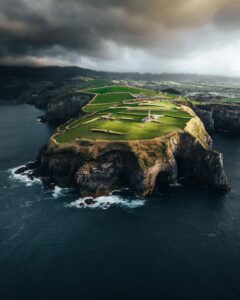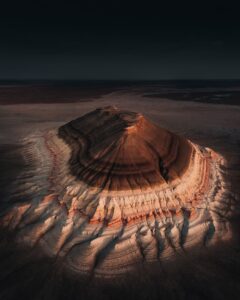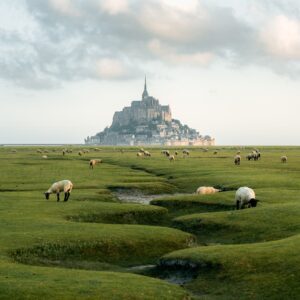
Photo tour in Azores, Portugal
Join us in the Azores for a unique photo tour, where you’ll elevate your creative skills with expert guidance from Ronald Soethje, Bruno Ázera, and Nomadict.
Giuliano Scarparo reflects on his journey in full-time nature photography, emphasizing the importance of patience, calmness, self-surprise, and continuous learning. He shares valuable lessons, including the necessity of top-tier equipment, capturing unique animal behaviors, acknowledging the role of luck, and studying environments.
Fortunately, over these years, I have been able to delve deeper into many aspects, which has allowed me to grow professionally and personally since the last time I shared my experiences at Nomadict.
The four most valuable lessons I have learned over the years are the following:
– Have a lot of patience in what I do. You often have failures in this area, but sooner or later, you will succeed.
– Calmness. I have always been very active, but nature photography leads you to maintain maximum calm and tranquility in many situations.
– Always surprise yourself in every situation precisely because animals are unpredictable. You have the opportunity to surprise yourself because every single shot will be different for one reason or another.
– In recent years, I have improved my photographic process by studying more and more to capture increasingly high-level images. But there is always more to learn.
Surely, every moment spent in nature is spectacular precisely because every second, any situation can change. I certainly have fantastic memories.
The first time I saw a brown bear, it was really exciting. Still, every animal fascinates me, some more, some less, but all have something that attracts me. The nice thing is that each animal normally finds itself in different situations that force you to be very technically flexible to be able to take a photo, so I took advantage of this reason to learn a lot on a technical level.
The four ingredients for a very beautiful photo, in my personal opinion, are:
– High-end equipment “unfortunately plays a huge advantage in some cases.”
– Knowing how to capture particular animal behaviors, such as a look, a grimace, unusual behavior, etc.
– Luck certainly plays a very important role in this photographic field.
– Studying the environment also certainly helps to create a beautiful photo. Each setting has particularities that must be exploited.
One of the photos that, photographically speaking, I really like and consider very successful is the photo of a roe deer taken about 1 hour from my house.
This photo is almost perfect. The light entered between the branches of a grove. The warbler came out of this grove at dawn, only a few meters from me. I managed to make the most of my “Canon 1dxII” camera ” and my 400 mm f 2.8 lens.
The blur created since I was very short in perspective is satisfying! The colors of the grass and the various shades are perfect.
Seeing such a beautiful roe deer in shape is quite rare. This roe deer was photographed in its maximum splendor. I know that area well because I frequent it a lot as it is just a few km from where I live, and I have always loved it. The quantity of roe deer present is significant, but it was difficult to choose where to hide and have this beautiful specimen that came out precisely at that point. These are truly rare situations. I have thousands of photos of roe deer, but only this almost perfect photo.
Unfortunately, in this photographic niche, we need help from the equipment for two reasons: The animals are observed at a very high distance and mainly in moments of low light, “sunrise and sunset.” These two problems are reflected in the equipment, so I recommend having equipment as long as possible, in millimeters of focal length, and as bright as possible (long ISO values). Normally, I use a Canon EF 400 mm f focal length 2.8 to give an idea. The minimum focal length is normally 200 mm.
The forest is certainly a magical place in all its aspects, and it is a place that hides many animals and many different situations. The beauty of nature is precisely this: having unique characteristics in every corner.
When I edit, I maintain my style in all respects, with the pros and cons I encounter. My style often could go better with the photo taken because it has no yellow tones, for instance.
I have always thought about trying to be “unique” or rather trying to be noticed for something different. Many nature photographers express nature as they see it inside the camera, and I consider them all very good. Still, in this world and social media, there is a need to stand out.
So, I get into people’s minds so they can immediately associate it with my brand when they see a photo of me. This approach is the thing that made me grow the most.
Perseverance was certainly fundamental to achieving those satisfactions over time! In this photographic genre, giving up means throwing away days and hours of work, whereas persisting in your projects and being stubborn leads you to get results.
This photographic genre is mainly based on studying the behaviors and habits of each animal, but fortunately for them, the instinct to escape from man makes observation difficult. Cold, heat, rain, and darkness often make you lose the desire to continue. Still, perhaps after months and months of failed stakeouts without being able to capture even a photo, a single moment is enough, a single look that repays you for all the effort you have made.
Each animal is fascinating in different ways, so it’s difficult to say which photo is the best or closest to my heart because every moment is unique. Still, there are two photos that I particularly love.
The first is a fox, an animal I love very much because it is difficult to photograph nicely. This image was my first shot of a fox many years ago.
It was exciting because, being a beginner, I didn’t expect any of this. I found myself in front of a fox standing still and probably observing me for minutes while I was busy trying not to be seen or heard by anyone. It was magical because it was as if it had remained still looking at me until I took this photo, and then she ran away. It’s as if I wanted to give myself a gift.
This photographic genre is mainly based on studying the behaviors and habits of each animal, but fortunately for them, the instinct to escape from man makes observation difficult. Cold, heat, rain, and darkness often make you lose the desire to continue. Still, perhaps after months and months of failed stakeouts without being able to capture even a photo, a single moment is enough, a single look that repays you for all the effort you have made.
The other is a recent photo of a bear cub, an animal I love more than many others. It was doubly exciting. It had been a long time since I was able to bring home photographic results that satisfied me, and after about 6 hours in a 2 square meter shed in the cold, I found a mother with two puppies alone. At a certain point, this very puppy was as if he had sensed my presence and stared straight into my eyes for about 1 minute, and the feeling was like he wanted to talk to me, which was exciting!
In 10 years, I hope to still be me with the same passion and dedication that I have in nature photography, but with different experiences and having had the opportunity to travel every single day, having had the chance to observe and study many more animals than those I have followed until today, with the awareness that I will never stop learning and I will never stop surprising myself!

Join us in the Azores for a unique photo tour, where you’ll elevate your creative skills with expert guidance from Ronald Soethje, Bruno Ázera, and Nomadict.

In this article, Forest shares how years of chasing scale, silence, and raw landscapes shaped his approach to photography, from the deserts of Kazakhstan to the volcanic ridges of Iceland. He talks about how he uses light, texture, and vast negative space to create images that feel both intimate and overwhelming.

Simon shares the journey behind his photography, from early inspirations to field techniques, editing, and the story of the winning shot that shaped his path.

In this article, Miro shares how his love for cinematic music evolved into a deep passion for photography and how he uses light, color, and atmosphere to turn the streets of Prague into living film scenes.

In this article, Stefanie reveals how her background in physics sparked her passion for astrophotography and how she blends science with creativity to capture the beauty of the night sky. Readers will discover her approach to color, contrast, and editing, as well as her aurora photography workflow.

Spanish photographer Yhabril captures the profound connection between humans and the mountains that shaped him. Growing up in the Pyrenees, his work bridges outdoor sports, landscapes, and celestial scenes — often blending athletes, moonlight, and wilderness into striking visual stories.

In this article, Ariane shares how photography helped her navigate personal challenges, connect authentically with people and animals, and develop a philosophy rooted in empathy and artistic freedom. Readers will also discover her ethical approach to wildlife photography and her trusted equipment for both camouflage techniques and cameras.

Discover how to photograph Dutch tulip fields in their most magical light. From choosing the right gear and lenses to mastering composition, color, and aerial perspectives, this guide shares creative techniques to capture the beauty of the Netherlands’ tulips. Learn how light, color grading, and proportion bring emotion into every frame.
